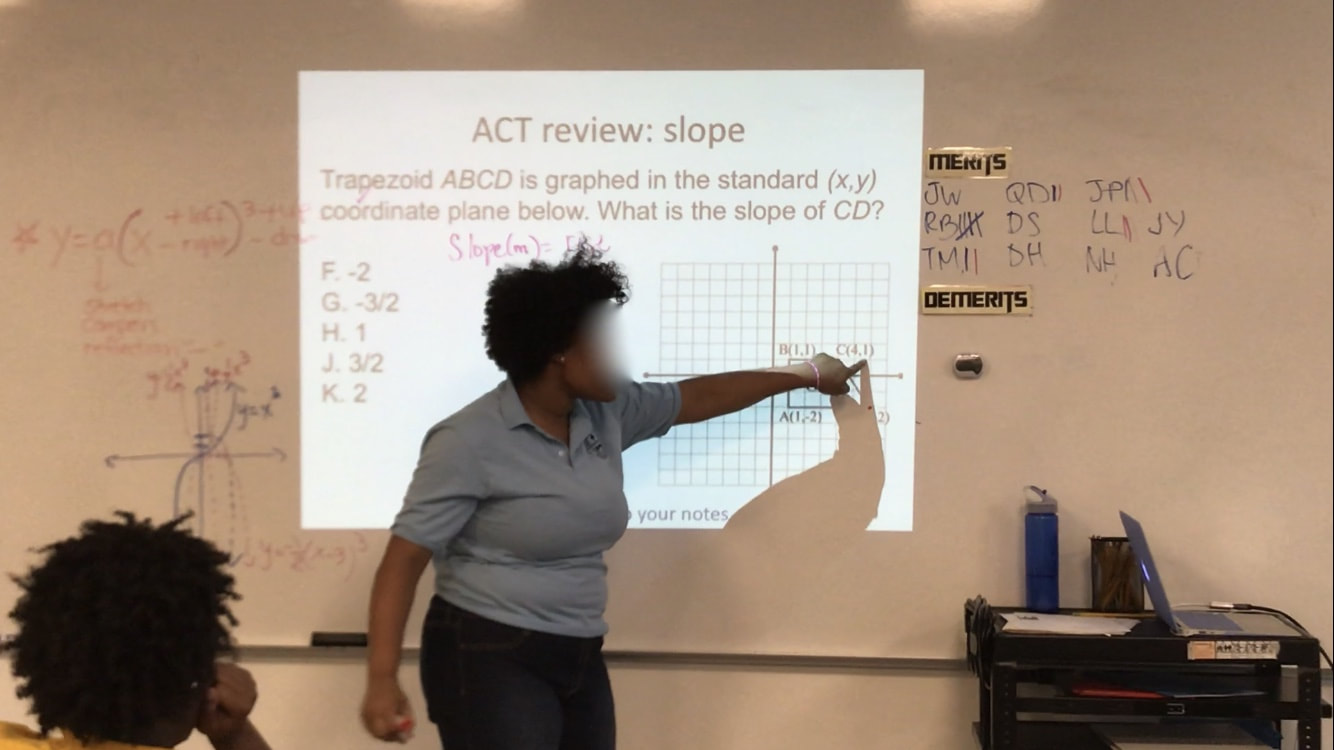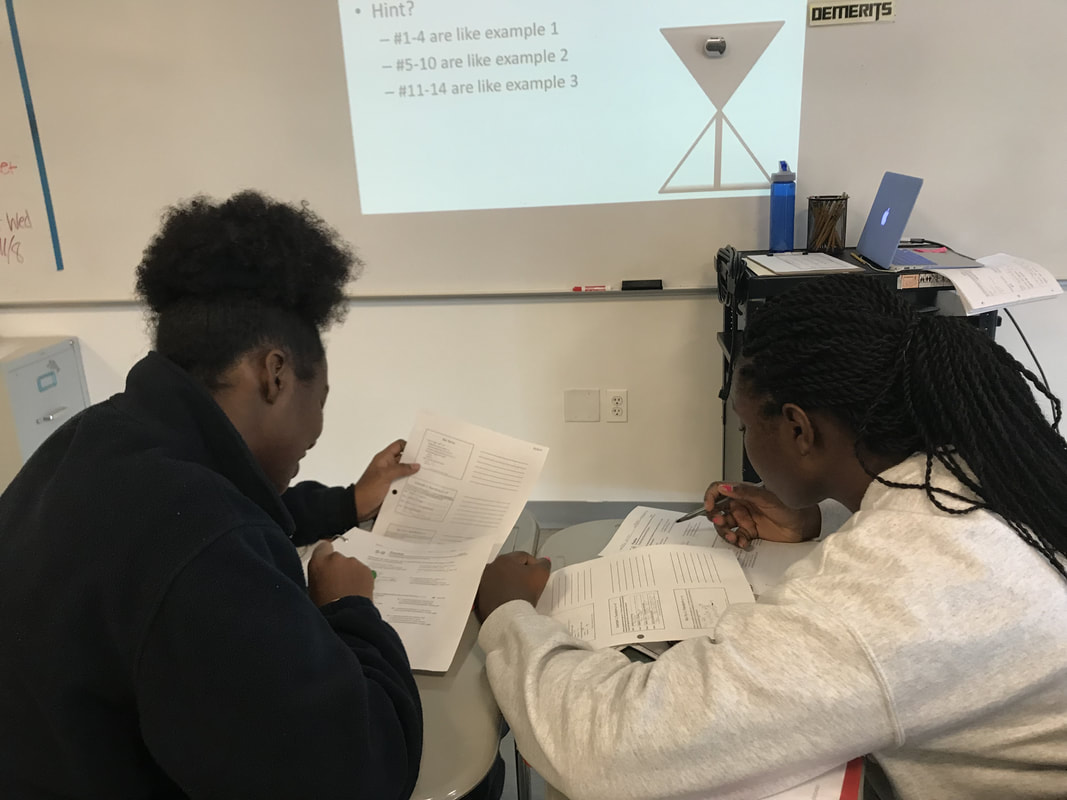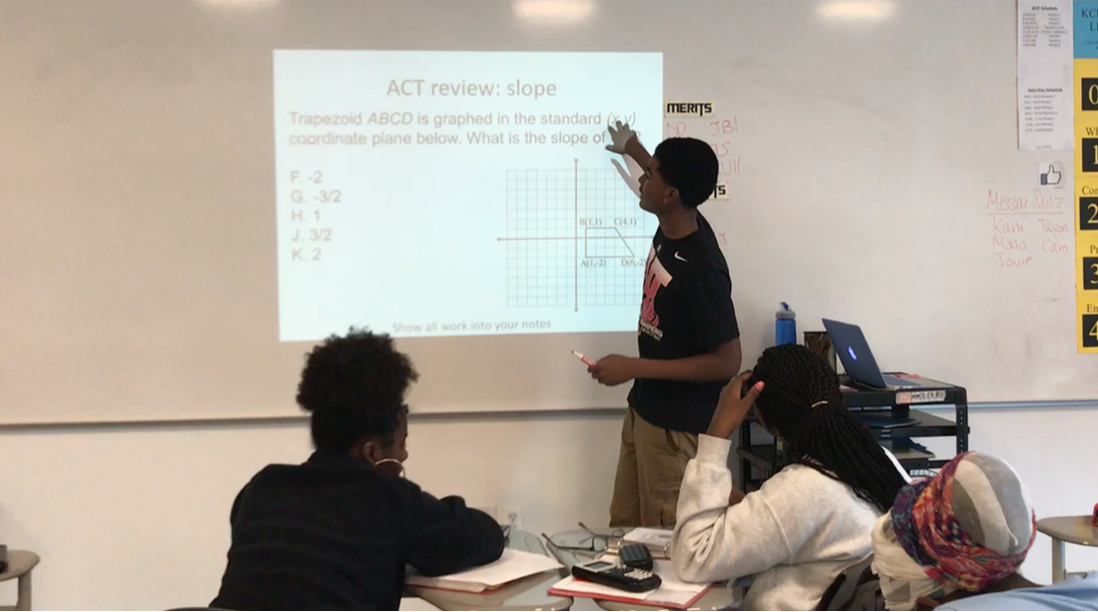Student-Led Learning
STUDENT-LED LEARNING OVERVIEW
Student-led learning is a core component of culturally responsive teaching. Student-led learning empowers students to take ownership and pride in their education. Student growth is an active, collaborative, and social process. I want my students to practice and believe that they each have meaningful, important, diverse contributions to add to the classroom. Therefore, after direct instruction, I engage students in a range of instructional strategies that strengthen their leadership skills. I vary my role as teacher, facilitator, coach, and observer to provide my students with the space to take on leadership opportunities.
Peer learning and student surveys are two regular methods I implement in my classroom to ensure that students are being heard. Through peer learning, students vocalize their learning, and in doing so, practice their communication skills. Peer learning also allows me to monitor student learning and adjust instruction in response to the level of understanding. I often catch misunderstandings, questions, and note exceptional understanding when students are communicating with their peers about Algebra II.
I use student surveys to gather feedback and learn more about my students. Student surveys help me create lessons that are relevant to my students' interests and their community. While I conduct informal surveys through regular conversations with students, I also conduct five formal surveys spread across the year. Regular surveys allow me to gauge changes in student circumstances, interests, strengths, and weaknesses. Student surveys are valuable to me because I adapt my lessons to my students' responses and suggestions.
Please scroll down or click on the table of contents below to learn more about peer learning and student surveys.
TABLE OF CONTENTS
Peer Learning
Student Surveys
Student-led learning is a core component of culturally responsive teaching. Student-led learning empowers students to take ownership and pride in their education. Student growth is an active, collaborative, and social process. I want my students to practice and believe that they each have meaningful, important, diverse contributions to add to the classroom. Therefore, after direct instruction, I engage students in a range of instructional strategies that strengthen their leadership skills. I vary my role as teacher, facilitator, coach, and observer to provide my students with the space to take on leadership opportunities.
Peer learning and student surveys are two regular methods I implement in my classroom to ensure that students are being heard. Through peer learning, students vocalize their learning, and in doing so, practice their communication skills. Peer learning also allows me to monitor student learning and adjust instruction in response to the level of understanding. I often catch misunderstandings, questions, and note exceptional understanding when students are communicating with their peers about Algebra II.
I use student surveys to gather feedback and learn more about my students. Student surveys help me create lessons that are relevant to my students' interests and their community. While I conduct informal surveys through regular conversations with students, I also conduct five formal surveys spread across the year. Regular surveys allow me to gauge changes in student circumstances, interests, strengths, and weaknesses. Student surveys are valuable to me because I adapt my lessons to my students' responses and suggestions.
Please scroll down or click on the table of contents below to learn more about peer learning and student surveys.
TABLE OF CONTENTS
Peer Learning
Student Surveys




